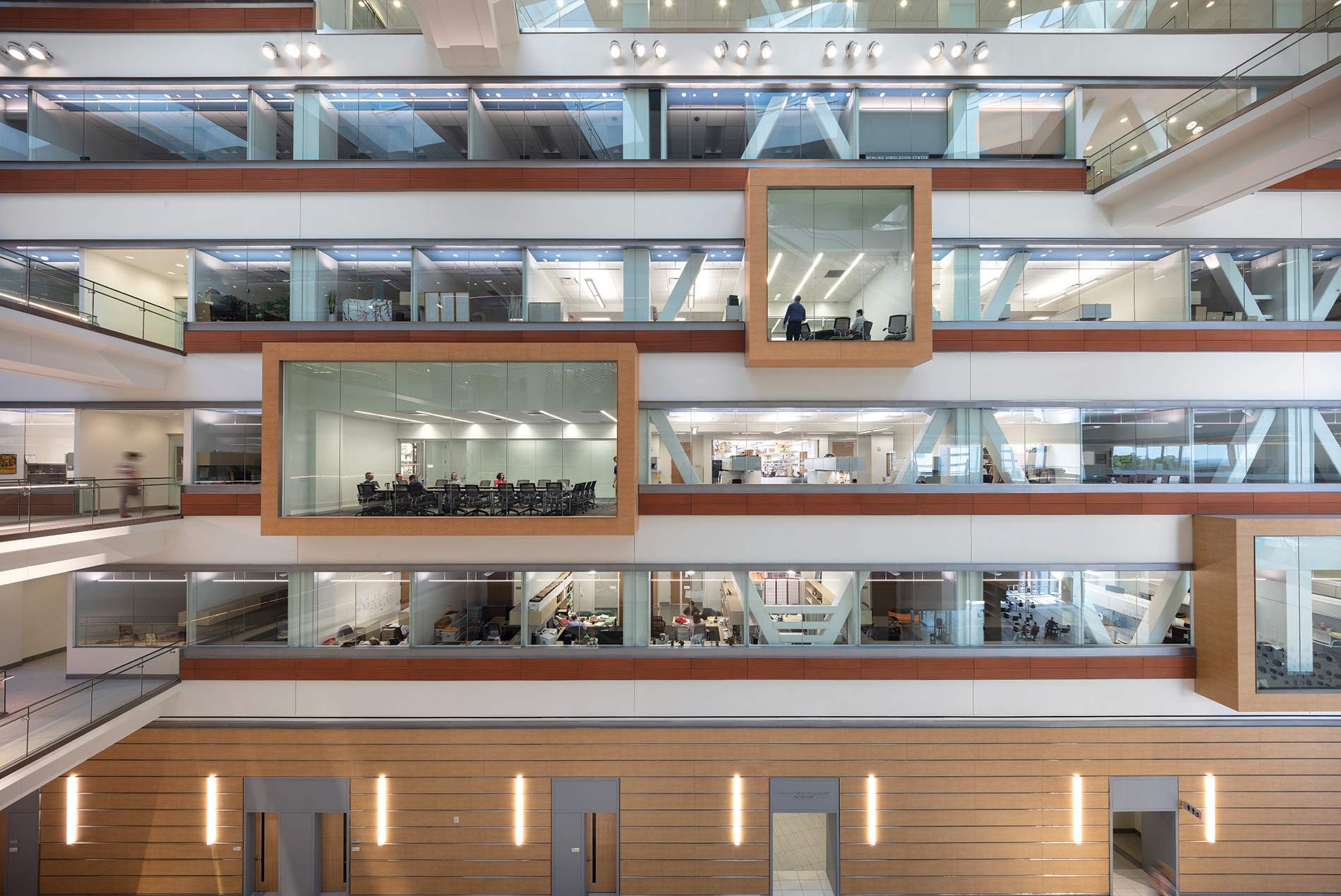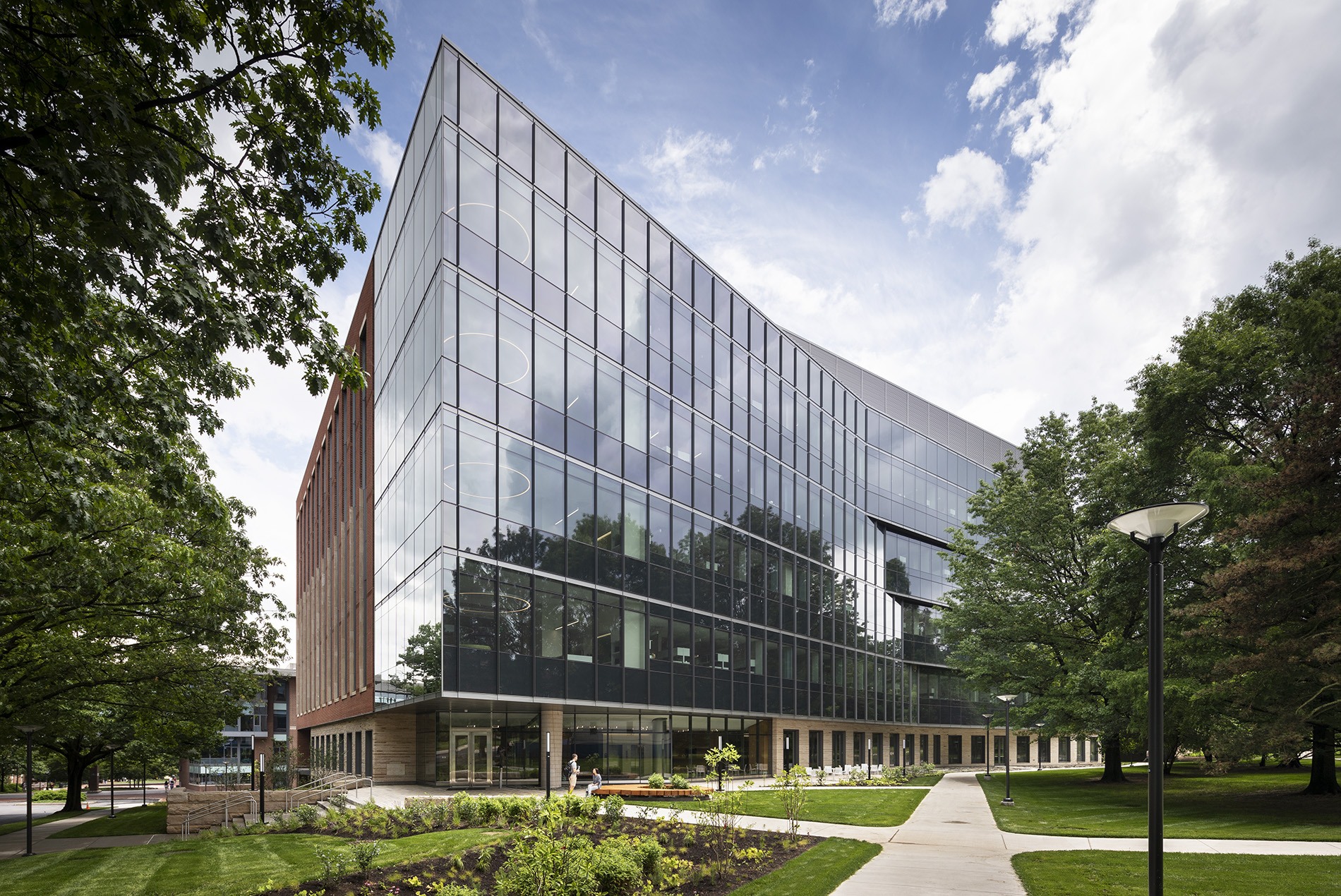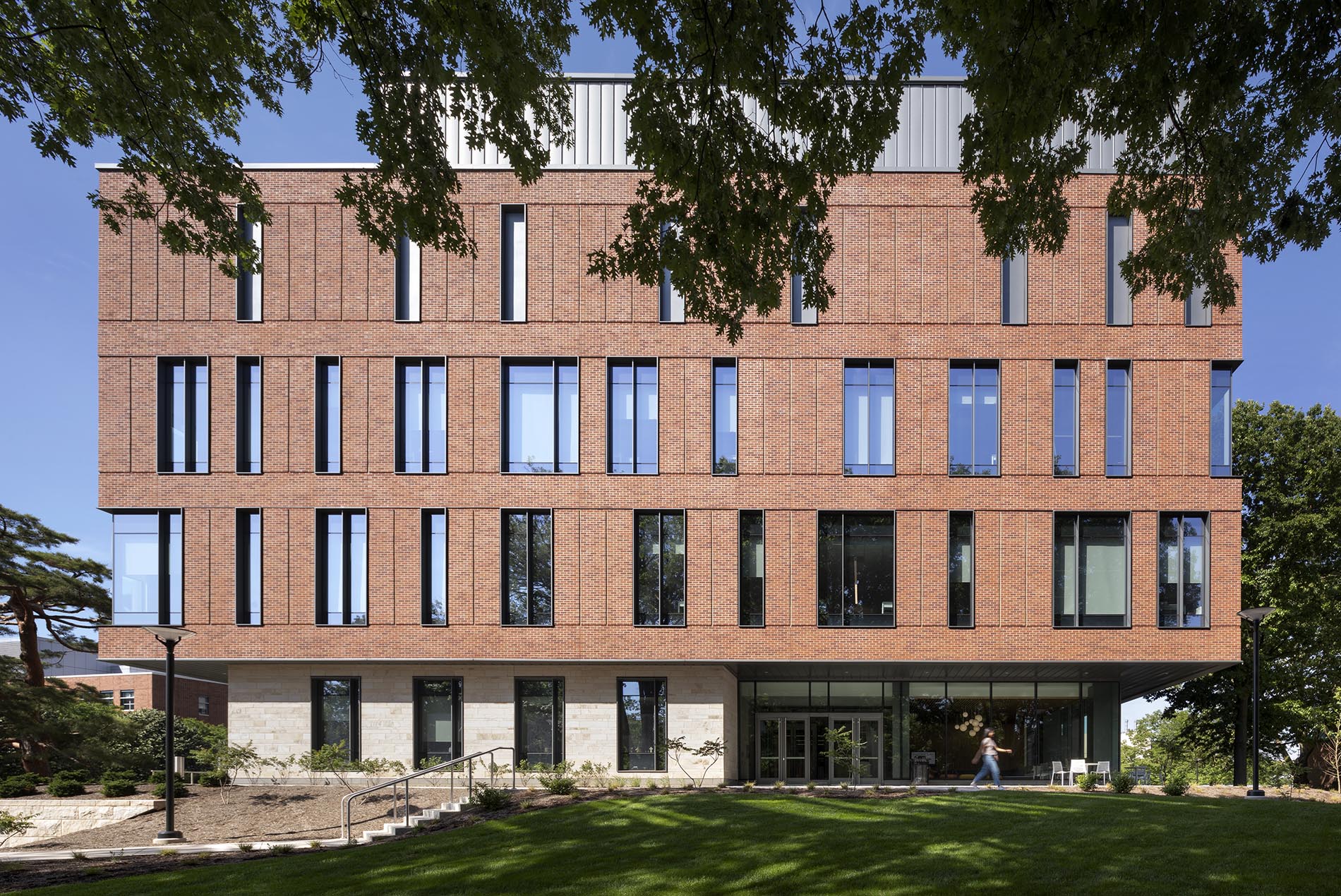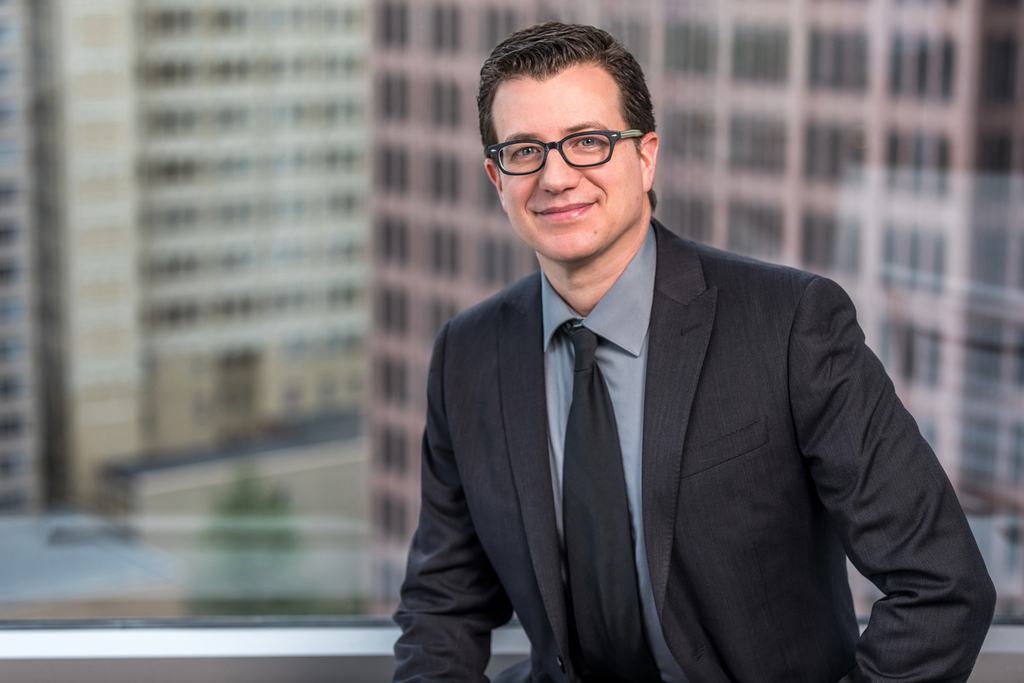Brian Smiley, AIA, LEED AP BD+C, CDT, senior project architect and director of sustainability in HOK’s Philadelphia office, has devoted his three-decade career to promoting sustainable practices and shaping the future of the architectural profession.
As a dedicated advocate for sustainability and a member of the board of directors and 2024 president-elect of the Philadelphia chapter of the American Institute of Architects (AIA), Smiley has led climate, policy and equity-focused initiatives—all while leading HOK teams in the design of award-winning projects for a variety of building types including science and technology, higher education and corporate facilities. In this Q&A, he reflects on his journey, the value of mentorship in empowering the next generation of architects, the importance of advocating for the future of the profession and more.
What inspired you to join the AIA, and what motivated you to want to serve as the president of the Philadelphia chapter?
Like many sustainability-focused architects, I joined our local U.S. Green Building Council chapter (Green Building United) after becoming a LEED-accredited professional in the early 2000s. After many years of working with the AIA and Green Building United, I recognized a growing need to advance sustainability among Philadelphia architects, establish a forum for architects and advance the AIA’s sustainability initiatives. There also was a need to convene experts to address requests from local and state legislators and provide testimony on environmental legislation affecting the built environment. Creating a strong COTE committee in Philadelphia seemed long overdue.
In 2016, I founded the COTE committee and, with the support of several passionate professionals, rapidly expanded it to a group of over 30 professionals across five separate subcommittees dedicated to advancing sustainability in architecture. I currently serve as the COTE policy chair in Philadelphia and chair of the statewide COTE.
I was elevated to the AIA Philadelphia board of directors in 2020 as the director for sustainability and preservation, focusing on my primary interests as an architect and Philadelphian.
I was motivated to serve as president because AIA and COTE align with my values as an architect, and I want to continue promoting these initiatives. Additionally, following my friend and current president, Rob Fleming, who shares my views on sustainability and environmental justice (EJ), ensures continuity in advancing our shared goals and encouraging more widespread adoption of sustainable practices among architects. We believe that as successive leaders, we can really move the needle on sustainability.
 University at Buffalo Jacobs School of Medicine and Biomedical Sciences in Buffalo, New York
University at Buffalo Jacobs School of Medicine and Biomedical Sciences in Buffalo, New York
What are some of the major initiatives or projects you have worked on or hope to work as president of the AIA Philadelphia chapter, and what impact will they have on your community?
My primary focus has been on sustainability, climate, policy and equity. I have previously engaged in many activities and projects, including AIA 2030, Design Awards, Policy + Advocacy, ZERO waste events/materials, Environmental Justice, Marketing and Outreach subcommittees, and the AIA Big Sibs Climate agreement, which passed during their meeting in Philadelphia in 2019.
As president in 2024, I plan to further develop the sustainability-focused Design Awards framework. I’m proud that HOK won Philly and Pennsylvania’s first two Sustainability awards. I want to make sustainability a requirement for all AIA awards in Pennsylvania and nationwide. It is currently mandatory for all projects in Philadelphia.
Additonally, I hope to positively impact our local environment through the adaptive reuse of buildings, creating local jobs in the skilled construction trades and promoting premanufacturing. Premanufacturing provides more regular, stable and local employment for construction workers, fostering equitable workforce development. It also leads to faster, less disruptive on-site work in urban settings, improved quality control and enhanced energy efficiency.
Lastly, I want to explore the potential of artificial intelligence in architecture, as it is an emerging technology we cannot ignore.

Penn State Chemical and Biomedical Engineering Building in University Park, Pennsylvania
How can the AIA can continue to improve its public outreach and promote the architecture profession?
The AIA should position architects as stewards of good design and trusted, impartial advisors for the long-term quality and longevity of buildings. By endorsing products and practices that advance sustainability, reduce energy consumption and promote diverse and equitable employment, we can demonstrate our commitment to the public.
We also need to engage with local and state legislators, high-profile architects and experts from organizations like the Rocky Mountain Institute and National Renewable Energy Laboratory to raise awareness of current legislative issues surrounding sustainability topics, such as energy, electrification, embodied carbon, adaptive reuse, materials and deconstruction, and environmental justice. This will help more people appreciate the value architects bring to society.
How has serving in a leadership role with the AIA Philadelphia chapter impacted your architectural career, and what skills have you developed through this experience?
Serving in a leadership role has allowed me to learn from a vast network of professionals, hone my public speaking skills and engage with local universities on sustainability topics. I have participated in events such as the AIA National conference, the “Spring Into Action” keynote speaker series and architect advocacy days for the city and state.
Throughout my leadership journey, I have focused on mentoring the next generation of leaders, implementing a “free-range mentoring” approach that offers the right balance of autonomy, timely guidance and support. This experience has taught me the importance of collaboration, learning from others, and sharing my knowledge and expertise.
How do you balance your professional responsibilities as an architect with your volunteer work for the AIA?
My passion for sustainability fuels my interest in my professional work and volunteer efforts. When you are deeply interested in a topic, you naturally dedicate time outside of work hours to expanding your knowledge and skills. You don’t want to stop.
What are the most significant benefits of volunteering and serving in organizations like the AIA?
Volunteering with the AIA provides opportunities to acquire skills and experiences you may not gain in your current role, access to industry experts and exposure to visioning and leadership practices in strategic planning. The AIA offers many leadership opportunities, especially for emerging professionals, and allows you to engage with a diverse network of professionals to share expertise and knowledge. This collaborative environment can help you grow both personally and professionally.

Penn State Animal, Veterinary and Biomedical Sciences Building in University Park, Pennsylvania
What advice would you give to other architects interested in volunteering or serving in leadership roles in their communities?
Becoming involved in policy as an architect has been a rewarding journey of self-education for me. At a presentation I gave to the AIA, I shared my experience using the framework of “Read Up, Team Up, Level Up.” By following this approach, I learned from mentors and have begun mentoring others on policy issues. My advice to fellow architects is to embark on this journey as soon as possible, as there are many procedural nuances in government that architects may not be familiar with. It is crucial for us to get involved, as many decisions affecting our profession are being considered in government. Advancing expertise locally requires passionate individuals. AIA National can’t do it all on their own. Once you “Level Up,” you’ll be sought out for your respected opinions and asked to testify and help advance the profession.
During the recent AIA Leadership conference, keynote speaker James Carville was asked about the importance of architects. He stated that people may not realize they need an architect now, but they will in the future. Sometimes, it takes an outsider to best summarize our value. In other words, architects help envision a future that does not yet exist. Our training and practice make us uniquely qualified for this role. The challenge is that the public doesn’t always appreciate or understand our contributions to future visioning, and both the public and legislators may not fully grasp the effort required for an iterative process to achieve results.
If we don’t think of the best possible future, who will? If we don’t advocate for the future of our profession and consider how we can best serve society, then who will? Architects are ideally suited as visionaries of a sustainable and prosperous future for all. We need to remain leaders in this endeavor.
